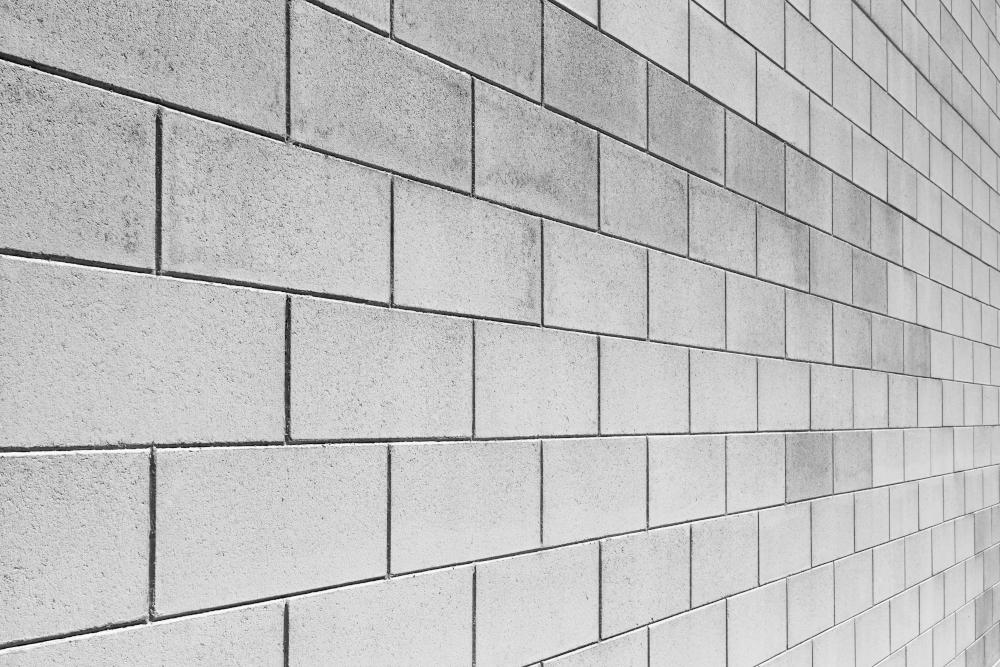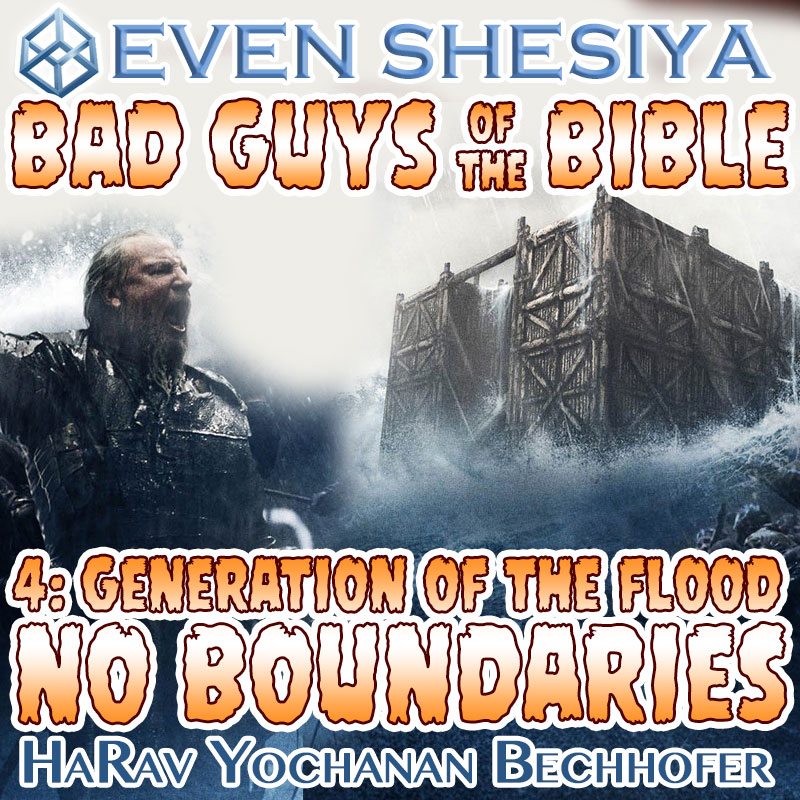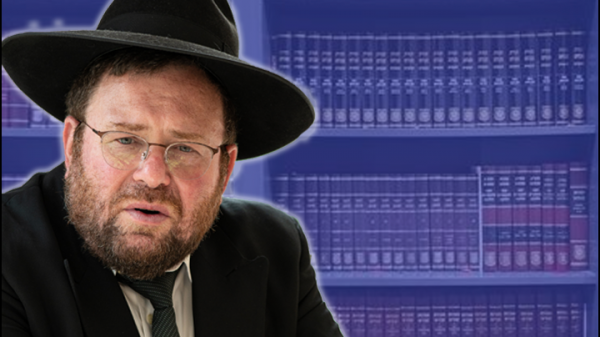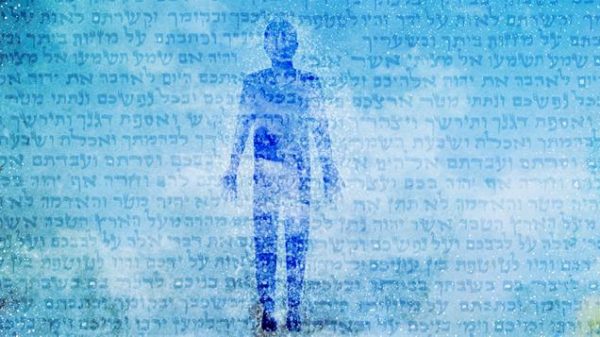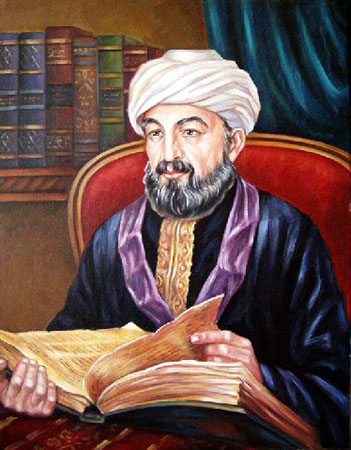
Click here to download PDF
Purity for all Kohanim
Parshas Emor opens up with the special Halachos pertaining to Ahron and his children. There are the laws of criteria to be fit to do “Avoda” and then there are the laws that are universal to all Kohanim, like the opening Halacha that the Kohanim must avoid contact with the dead. One would have thought that only the Kohanim that are fit for “Avoda” need to avoid contact with the dead, which disqualifies “Avoda”, but this is not the case. All Kohanim must keep themselves pure and never come into contact with a corpse. Why is this? What does it represent?
Week of “Hod”
In most years, Parshas Emor, with the special laws for Ahron and his children, come out in the fifth week of the Omer where we count in the sefira of “Hod”, which is the attribute of Ahron HaKohen. This year the week of “Hod” comes in immediately after reading Parshas Emor. This fifth week of the Omer has two significant landmarks. It starts with Pesach Sheini (this Sunday) and on the fifth day of this fifth week, which is the sefira of “Hod Sheb’Hod”, is Lag B’Omer when the talmidim of Rebbe Akiva ceased to die. It is also a special day for one of his outstanding surviving talmidim, Rav Shimon Bar Yochai whose academy started the process of formulating the Zohar. What is special about this fifth week that makes it the turning point of the Omer? What is the landmark of Pesach Sheini and what is the further landmark just a few days later on Lag B’Omer?
Count Down or Build Up?
Chazal say when the Jewish people heard from Moshe that we would get the Torah, they asked “when”? He answered “50 days from now”. The Jews started counting 50 days in anticipation of receiving the Torah. This remains the reason that the Rishonim say for the Mitzvah of Sefiras HaOmer, which we were commanded in this week’s Parsha. Shavuos does not actually have a date in the Torah. It’s the 50th day. By our set calendar, it must come out on 6th Sivan. However, the Gemara says in Rosh Hashanah, before we had our set calendar, it could come out as early as the 5th Sivan or as late as the 7th Sivan. (There is room to speculate that if following Pesach, chas veshalom, we would lose the calendar, there still may be Shavous, even if we would not have the Halachik authority to declare the months of Iyar and Sivan, because the Torah never set a date for Shavuos, it’s “the 50th day from Pesach”.) We see from the way we count the Omer. That the days are actually adding up, for instance, this Shabbos, we will count “today are 28 days that are 4 weeks”. We are not saying that it’s the 28th day, rather we are saying there are 28 days that have added up to 4 weeks. This sheds the light on the nature of Sefira. It’s not a “countdown” to Matan Torah, rather it is a “build-up”. Shavuos is the 50th day and 50 is first constructed out of the 49 that preceed it. This is the secret that the holiday is called “Shavuos”- weeks, even though it’s “just one day”, it is constructed out of all the weeks that preceded it.
Absorbing Days
In what way is the Sefira a construction of 50? Seemingly every day is alone and does not coexist with the day that came before it, or the day that comes after it. Where does all this time coexist? In the “Tzelem” of the Jewish people. The effect of any day of the Omer does not disappear into the past, it becomes a part of us and with every new day, we have more days in our construct. It is in the Jew and the Jewish collective that the days are piling up upon each other. The construct that is being formed is the renewed “Tzelem” of the Jewish people and that new “Tzelem” is the vessel that will receive the Torah.
Seven -fold Commitment
The seven weeks of the Omer are parallel to the seven forces of nature, which are the same seven middos that make up the human personality. The Chiddushei HaRim explains that to swear is called a “Shevua”, which is from the same root as “Sheva” – 7 because it is a commitment with all the facets of your personality. Less than all 7 would not be a full commitment that qualifies as “piv v’libo shavim”– his mouth fully reflected everything that was in his heart. With this he explains why Maseches Shavuos has 49 “dapim” parallel to the days of the Omer because you need all 7 aspects of all 7 middos to be committed and our commitment to the Torah has the Halachik standing of a “Shevua” as we find throughout Chazal “Mushbah v’Omeid M’Har Sinai” – He already took an oath to uphold the Torah at Sinai.
The Construct & the Journey
The parallels between these seven middos and the human form are as follows: the right arm corresponds to “Chessed”; the left arm corresponds to “Gevurah”; the entire mid-section of the body corresponds to “Tiferes”; the right leg corresponds to “Netzach”; the left leg corresponds to “Hod”; the “Bris” corresponds to “Yesod”; and the “crown of the Bris” or a man’s wife corresponds to “Malchus”. During the days of the Omer, we work on these seven middos in detail and their details can be subdivided by each other. For example: the first day of the first week is “chesed sheb’chesed”. The seventh day ending the first week is “Malchus sheb’chesed”. Therefore, when we’ve reached the week of Hod, we are on the “left leg” of the construct. Construction of the left leg is significant for two reasons: 1) The individual is now complete. Everything past that point, involves his ability to influence and reproduce. 2) It represents taking a step forward, a person first moves by his right leg first, the movement of the left leg completes the step and only then is it called that his position has changed.
“Mamleches Kohanim”
At the time of the giving of the Torah, Hashem said that with the receiving of the Torah, we will be a “Mamleches Kohanim”, a kingdom of Kohanim. Meaning to say, that the Kohanim represent the idea of being the “nation of Torah”. If not for the sin of the golden calf, the firstborn (only) of any Jewish family would have been a Kohen that could serve in the Beis HaMikdash. That particular privilege got centralized within the children of Ahron and with that they were ALL designated to be living representations of the concept “Mamleches Kohanim” which is common to the entirety of the Jewish people. The Torah is called “Toras Chaim” and “Etz Chaim”. Torah gives us a connection to Hashem and by virtue of that connection we are “living” as the pasuk says, “And you cling to Hashem your Lord, you are all alive today”(Devarim 4:4). Death comes from detachment from Hashem. In the future, with the power of Torah we will firmly affix our connection to Hashem and death itself will die and even the dead, will come back to life. The Kohanim who represent the idea of “Mamleches Kohanim” must never come into contact with death because they represent connection to the Torah which is life. With this, we understand what Hillel says: “be from the talmidim of Ahron, love peace, pursue peace, love the people and make them close to the Torah”. The Kohanim are living representations of our closeness to Torah, that’s where they get their holiness, they were the designated teachers, from and since the Torah is life, they must not come into contact with the impurity of death.
Pesach Sheini
Pesach Sheni is for a person who was far away or “Tameh”- impure at the time of Pesach. Case in point: the people who needed the first Pesach Sheini were impure because of contact with the dead. The Torah gives a person a chance to overcome that impurity and close that distance to get close. That’s everything that’s represented by Ahron, the need to stay pure and to be close to the Torah. With commencing the construction of the left leg, we are completing a step of getting close to the Torah. That’s the secret that Ahron was in the Beis Medrash at the time when the question was raised that precipitated the giving of the command of Pesach Sheni. (See more on this in Even Shesiya on Behaaloscha 5778).
Lag B’Omer
Lag B’Omer which is “Hod Sheb’Hod”, is exponentially more. A person can be geographically close but still be on the outside. It’s a thin line between “in” and “out”. That same thin line that is the absolute cut off point in space between one side and the other side. The Pasuk says: “[the Torah gives] long days (life) on its right side and on its left side, wealth and honor”(mishlei 3:16). “Right” represents “in” and “left” represents “out”. Where does “left” end and “right” begin? On Lag B’Omer! We mentioned last week in the name of the Maharal, that the first thirty-two days of the Omer has the numerical value of “Kavod”-honor and it was a time to take the Talmidim of Rebbe Akiva to task for not giving each other “Kavod HaTorah”. The Maharal points out that by no coincidence by our calendar Lag B’Omer always comes out on the 18th Iyar which has the same numerical value as “Orech Chai” – long life. Lag B’Omer is the point of crossing, from left to right, from being “out” to being “in”.
The Border
The Ari Hakadosh brings an allusion to Lag B’Omer from “Gal Eid”– the wall that Yaakov built between himself and Lavan, securing the border, leaving Lavan out and the Jewish people in. We had to go to Mitzrayim to have Lavan’s influence burnt out of us, as the pasuk says, “Arami Oveid Avi v’yered Mitzrayma”. Our journey to Torah is a journey to our Jewish identity which is on the “other side of the border” from our lineage to Lavan. We reached that border on the 33rd day of the Omer which is numerical value ‘Gal’, on Lag B’Omer we make it over the wall, and we are on the “inside track”.
The Exodus to the “Right”
When we fully refine the “left leg” (“Hod sheb’Hod”), which for us that is the transition of “moving from left to right” and “getting inside” that’s when Rebbe Akiva’s talmidim moved to the next phase of the operation after having been “enemies to one another” while on the “left” – they transition to the “right” and “do not move until they love each other” and merit the long life of Torah. The surviving talmidim were unified not just amongst themselves, but also in that they were engaged in compiling material into books. Rav Shimon bar Yochai in particular created an academy and his students actively worked together to compile and compose the Zohar (a process that continued for another 300 years).
Halacha & Kabbalah
With this we can understand what Lag B’Omer has to do with Rav Shimon Bar Yochai and the Zohar. The wisdom of Kabbalah is called “penimyius”- inner wisdom, only the initiated may enter. Whereas Halacha is universal for all Jews and universally accessible, hence it can be called that it’s on the “outside” for all to observe. There is another difference between Halacha and Kabbalah: Halacha is the directions of how to keep mitzvos which involve a justice system and combatting all forms of evil in the world. Mitzvos only deserve reward when they are done in struggle against the Yetzer Hara. In other words: Halacha is the code of conduct for a world that has evil in it. This world order emerged as a result of the sin of Adam that brought death to the world. What happens when there’s no more evil and no more death? At that time there will be no more mitzvos to be performed either. Chazal tell us “Mitzvos are annulled in the future”(Nidda 61A), “today (only) to do them and tomorrow to receive the reward”(Eiruvin 22A). What about Torah is eternal? The kabbalah that explains the meanings and the “Divine lights” that are in the Mitzvos – that is forever and is studied in the world to come. This is the secret of what that Zohar says that halacha is a counter measure to the Etz HaDaas whereas Kabbalah in general and the sefer HaZohar in particular is the Eitz Hachaim (see full discussion on this in “chesed l’Avraham” (Azulai) Maayan 5 Nahar 36). “Gal” also means to reveal as Dovid HaMelech davened: “Gal”- open my eyes and I will see the wonders of your Torah”(Tehillim 119:18) When we get over the “Gal”- wall the blocks are behind us and we merit “Gal Einay” and can see all the inner secrets of the Torah.
“Ikvasa D’Meshicha”
Rebbe Akiva’s legacy was to give us an eternal connection to the Torah. The journey that we make during the Sefira is a miniature of the journey of life. The 7 weeks are parallel to the seven millennia as Chazal say “6000 years will be this world and one [millennium] will be desolate and at the end of that 1000 years (of the 7th millennium)Hashem renews the world”(Sanhedrin 93A). Our receiving the Torah on the 50th day that ushers in the 8th week is what empowers the whole journey of destiny to make it to Olam Haba that comes in with the 8th millennium. We must have a lasting connection to Torah that could take us the whole way there. The generations are linked together like the construct of a person that we are talking about. The earlier generations are like the head, arms or the torso. The final generation is called “Ikvesa D’Meshicha” – the heels of Mashiach. Rebbe Akiva, like his name implies, the heel, guaranteed us a connection to Torah that will last to the “heels of time”. The Shelah HaKadosh points out that the nation that represents the snake is Edom, which was Rome. Regarding the adversity between man and snake Hashem say “He (man) will slay you by the head and you (the snake) will slay him by the “Akev”- heel. Thus, Rebbe Akiva was killed by the Romans but that was to atone for us and thus protect us, the “heel of the generations”. With Rebbe Akiva’s Torah and with his merit we will make it through “Ikvesa D’Meshicha”. We begin to feel the full fruition of Rebbe Akiva’s work and the particular cutting-edge contribution of his ace talmid, Rav Shimon Bar Yochai who said that “his attributes are the most select of Rebbe Akiva’s attributes”(Gittin 67A) from Lag B’Omer onwards. The days of the Omer toward Shavuos are a microcosm of destiny and the grand Lag B’Omer is in our later generations as we get closer to the end of time. In these generations we can truly appreciate the power of Rebbe Akiva’s achievement by seeing how it keeps the later lower generations connected and this is the secret that the Zohar was revealed in the later generations, for the sake of the later generations to give us the spiritual energy and the philosophical sophistication to combat the evils that we will face at the end of time. That’s the secret behind a statement in Chazal “Rav Shimon is worthy enough to rely on b’shaas Had’chak, in emergency circumstances” (Shabbos 45A) or in the words of the Zohar (Naso 124B): “because he Jewish people are destined to eat from the tree of life, which is the sefer HaZohar and with it, they will exit the Golus with Divine mercy” (and that’s the secret that Rav Shimon Bar Yochai’s last word, which he said on Lag B’Omer ,was “Chaim”- Life) may it be speedily in our days, Amen!

